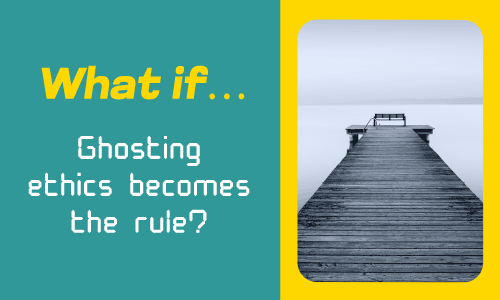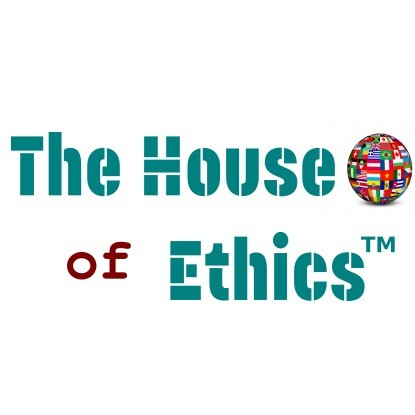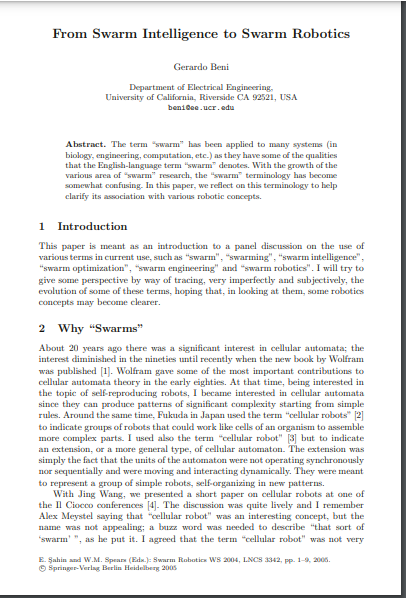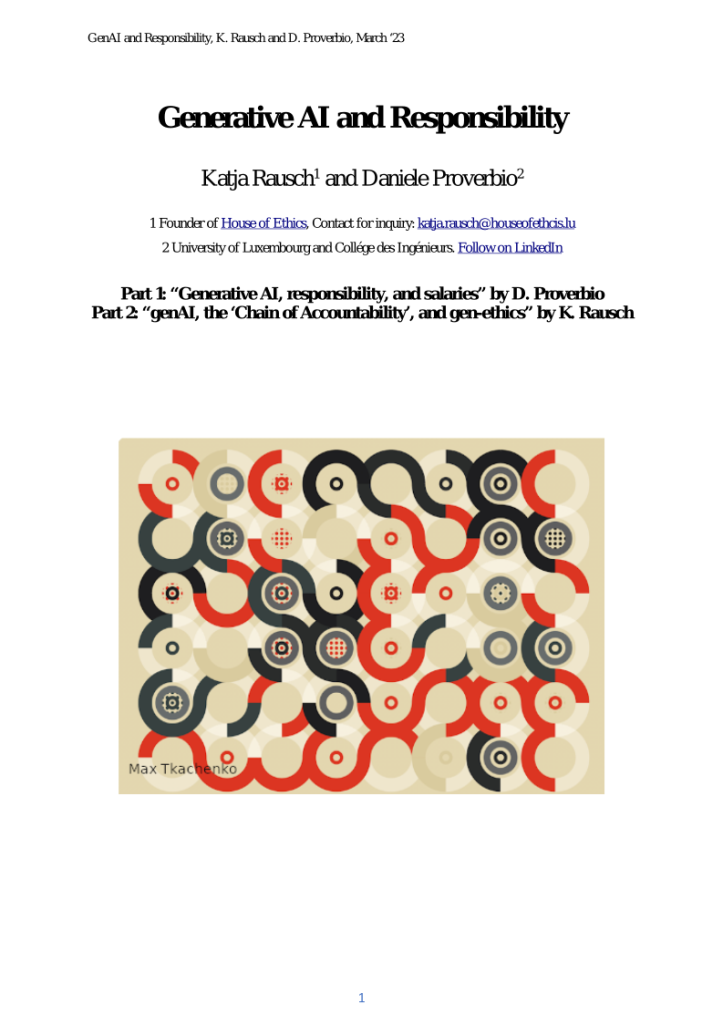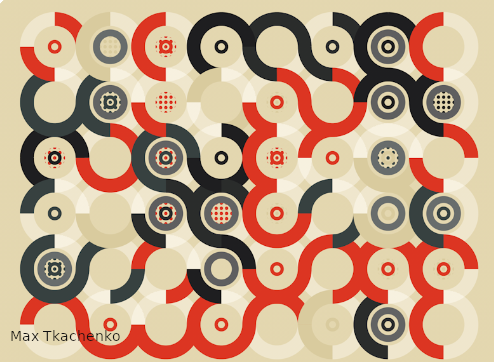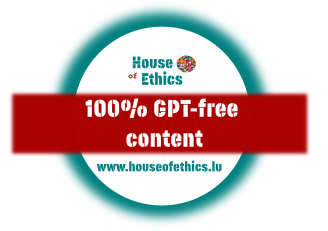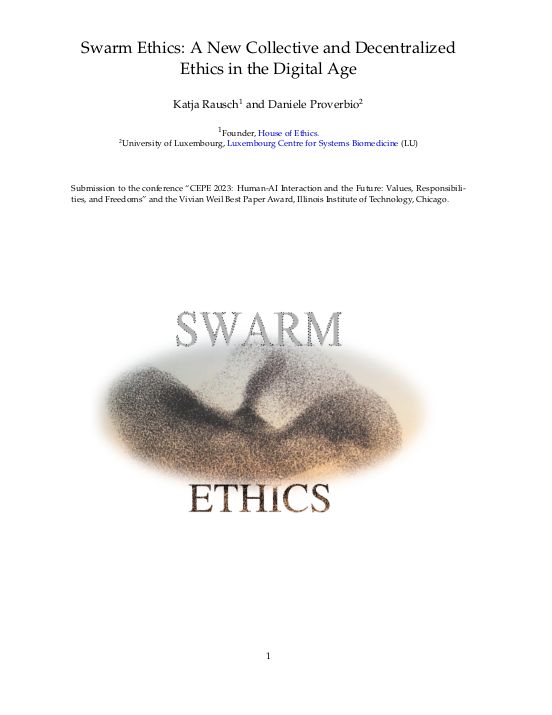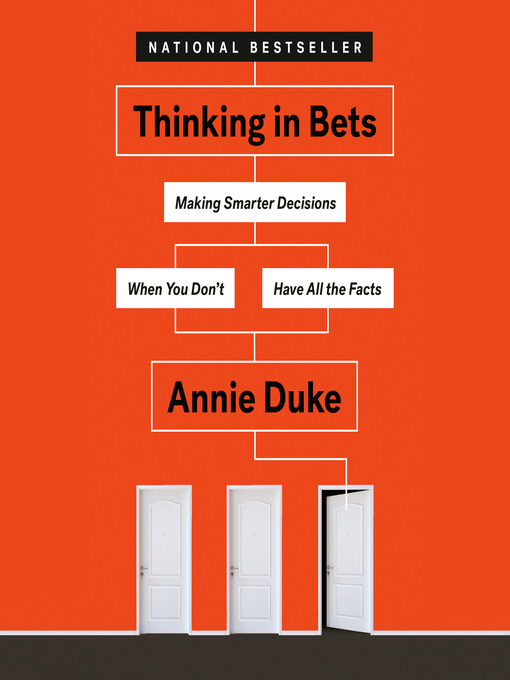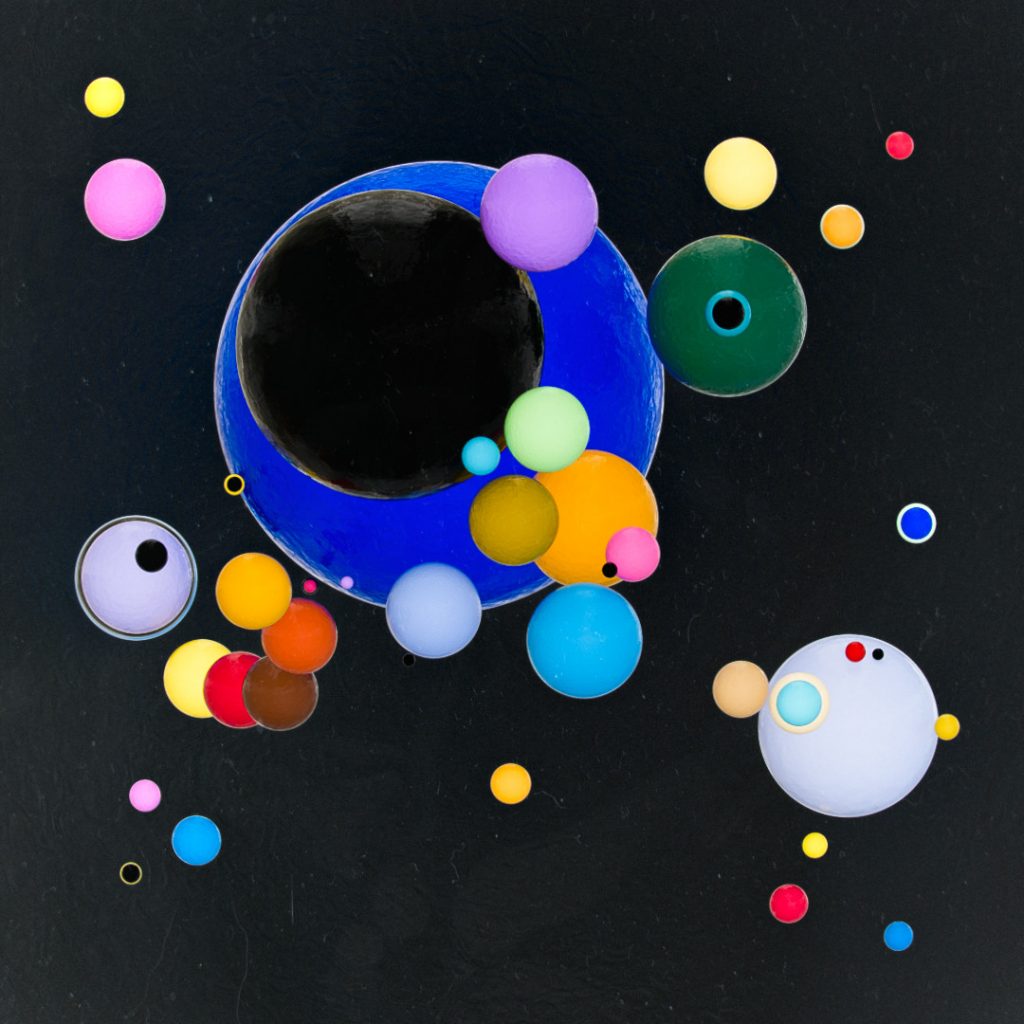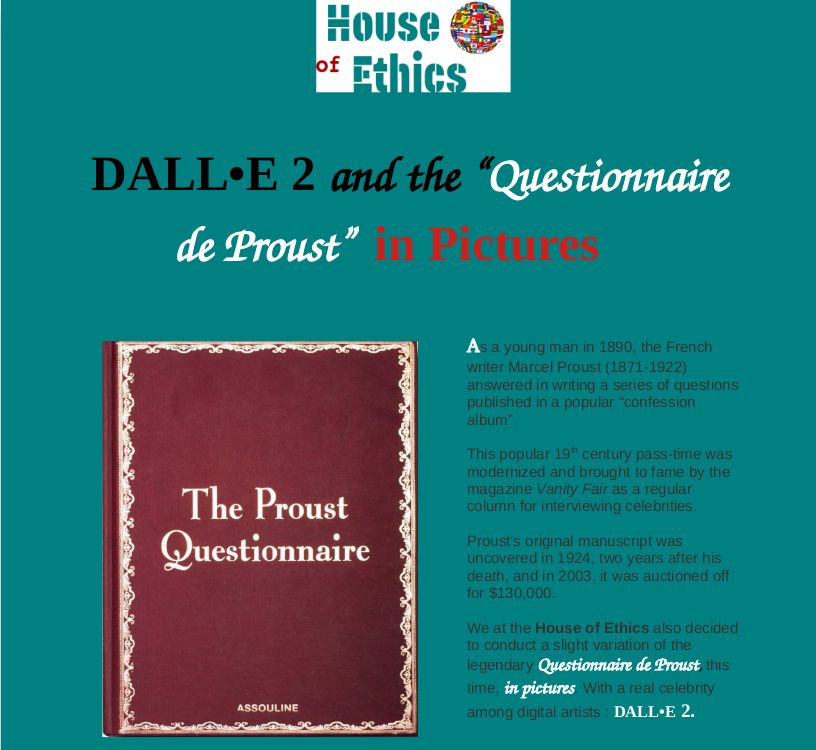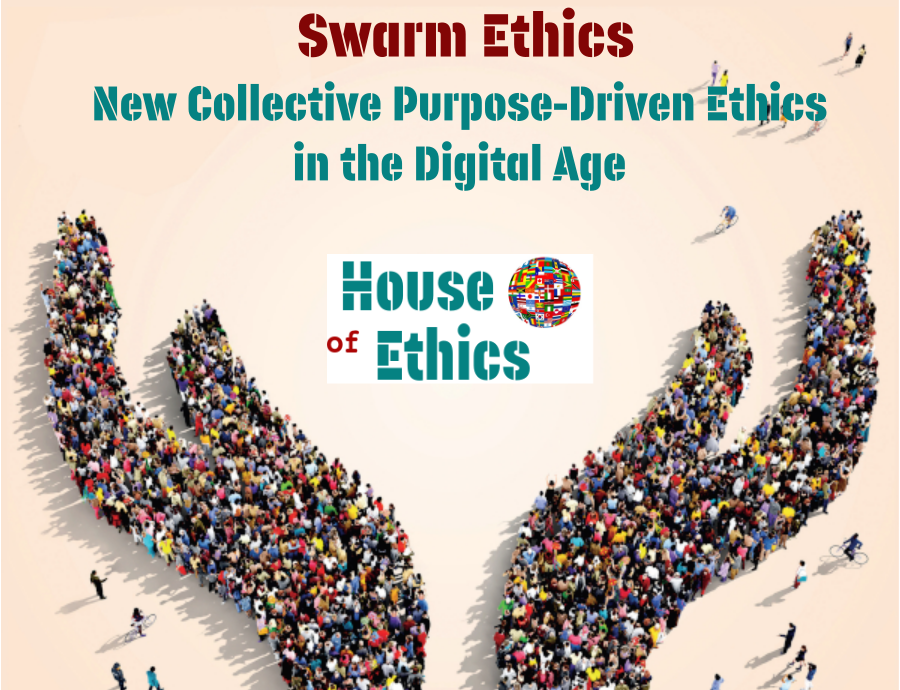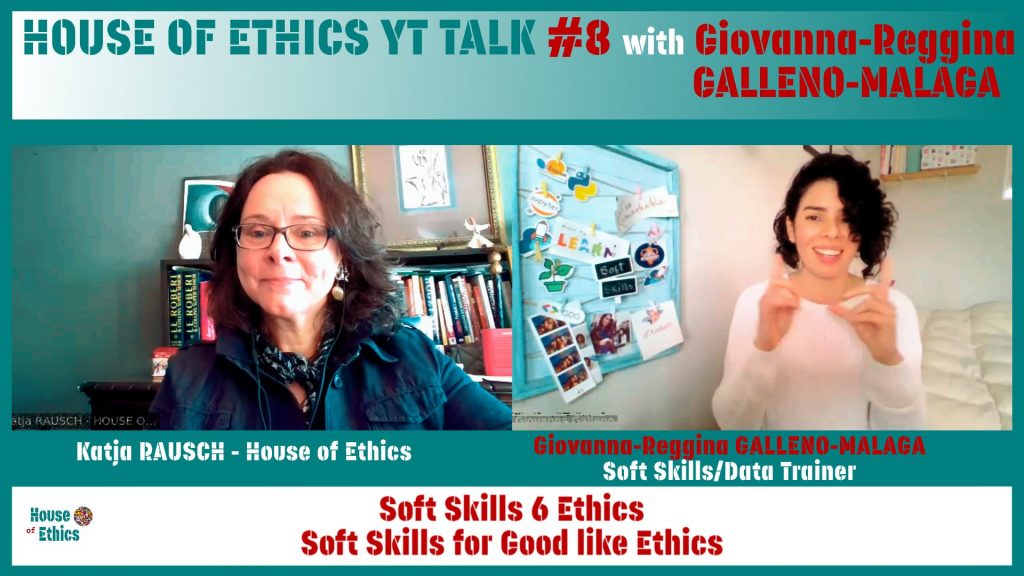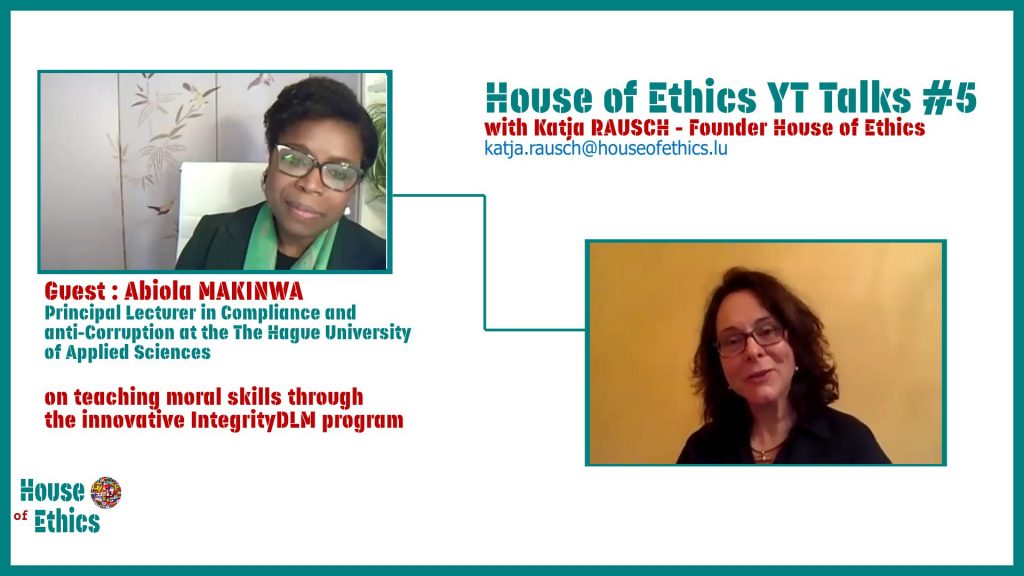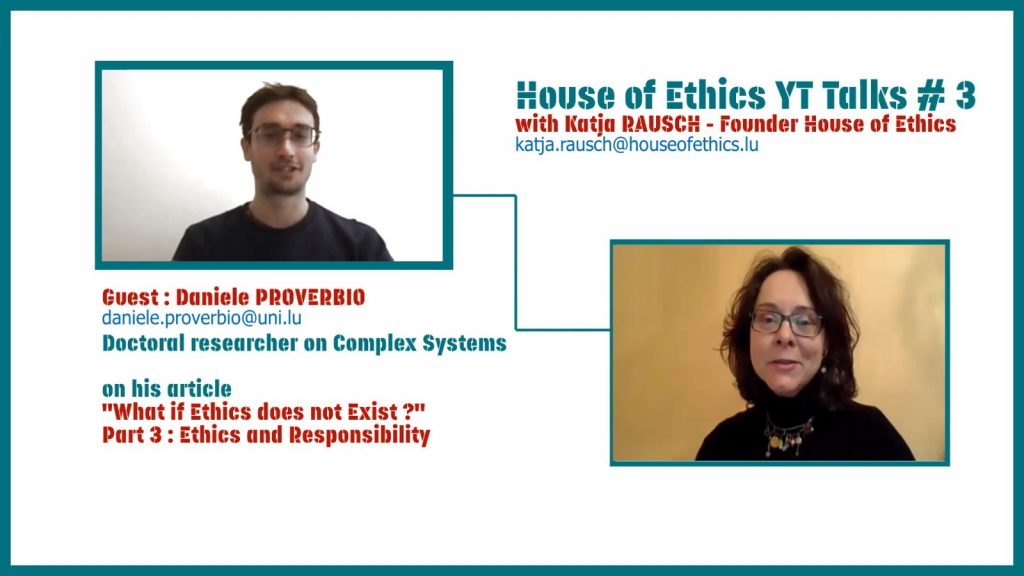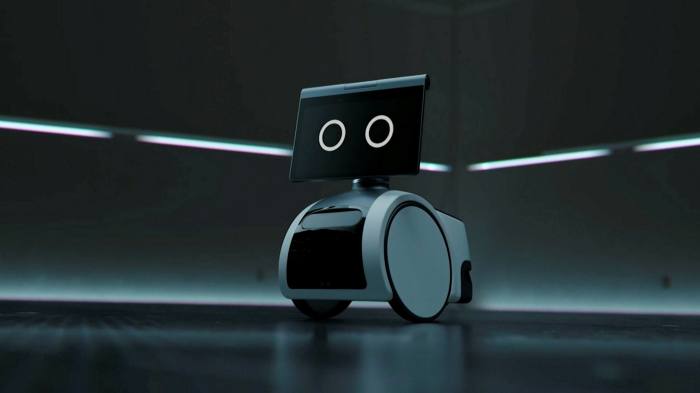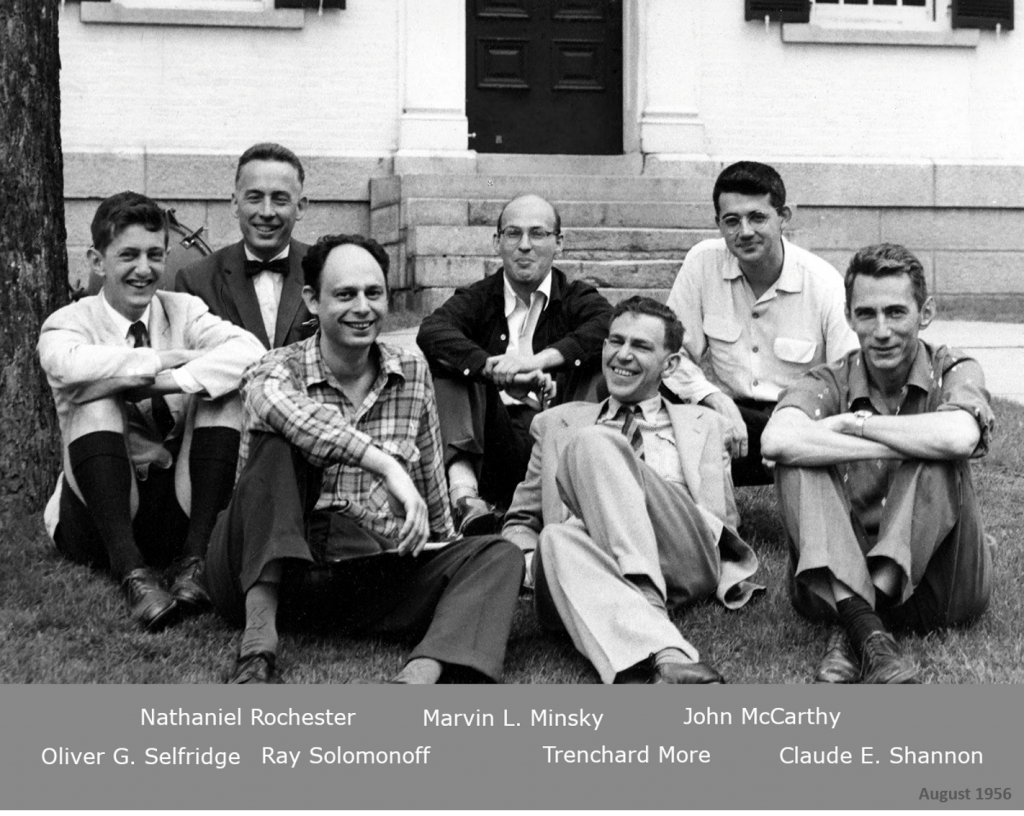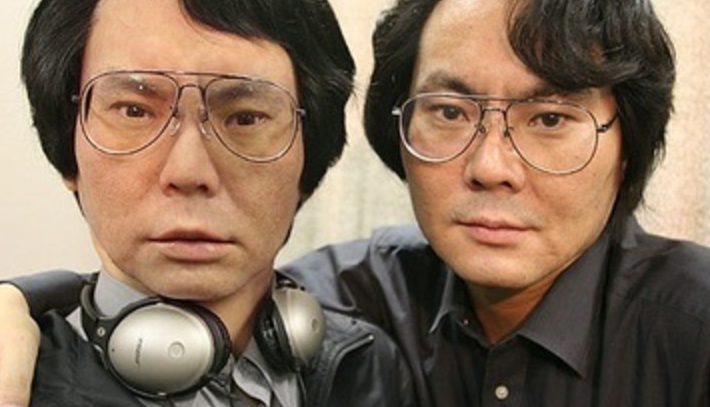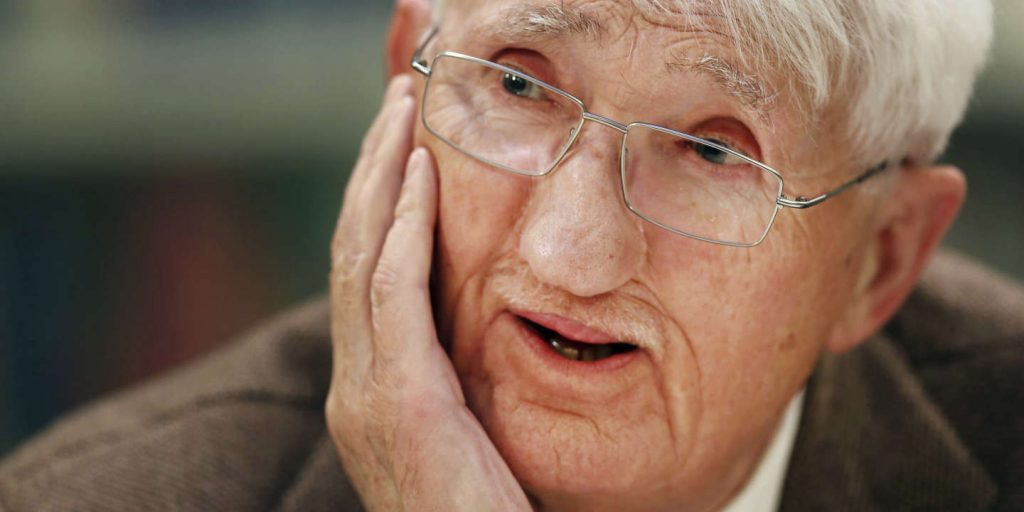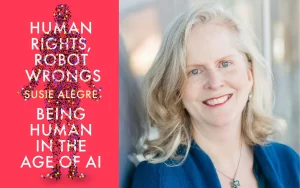From ‘Swarm Intelligence’ to ‘Swarm Ethics’ – A New Collective Purpose-Driven Ethics in the Digital Age.
From Swarm Intelligence to Swarm Ethics
A New Collective Purpose-Driven Ethics in the Digital Age
Lately the velocious evolution of a myriad of ethical narratives has produced a hyper-normative, stiff, distant and reduced ethics that is most difficult for people, professionals and businesses alike to relate to. Even though legal or constitutional Acts and regulations are for them to be applied.
Ethics applied to AI for example, has globally produced so many texts, regulations, Acts and reports that it is impossible to keep track. Nevertheless ethics applied to AI has mainly been reduced to 5 buzz concepts that sound like nerve-racking ear-worms : transparency, accountability, explainability, equity and fairness. But isn’t ethics much more than that? And how to put them practically into action on a daily basis in our data-driven and hyper-connected world? As a responsible person, decision-maker, designer, entrepreneur, data scientist, teacher, lawyer, researcher, doctor, caretaker, manager…?
In February 2022, a picture taken at the Munich Security Conference 2022 by Michael Bröckerat, editor-in-chief of the independent „The Pioneer“, shocked the public. It showed 30 CEOs having a formal business lunch. But why did it cause such a turmoil and enraged outpour?
Because it was a shot of an all-white, older male luncheon, former or active C-level executives. No women, no age diversity, amongst many reactions, were utterly shocking. “A reality in 2022!!!!” was amongst the most frequent comments. On social media and in the press it was hailed as being ethically wrong.
Later in the year, on September 19, Patagonia’s Founder and CEO Yvon Chouinard shook the business world again by donating all of Patagonia’s worth – $3 bn – to fight climate change. This move came also as a shock, but this time provoked the opposite reaction, a wave of celebration. It was unanimously applauded as being a “monumental decision”, simply explained in Chouinard’s “Earth is now our only shareholder” famous short letter. A move hailed as ethical right.
Such extreme and ‘obvious’ ethical reactions spurred this article about the existence of a new kind of ethics in the Digital Age – Swarm Ethics.
Inspired by Swarm Intelligence, a collective intelligence based on decentralized collective behavior towards a common goal, Swarm Ethics features numerous similarities as well as specific new characteristics.
Can digital communication and mostly social media generate a new kind of scalable, interactive and collective ethics, Swarm Ethics? This new phenomenon in the ethical field is based on perception-action behavior and qualifies as highly purpose-driven.


Swarm Intelligence :
Collective decentralized intelligence
In 1989, in the context of cellular robotics, the term ‘Swarm Intelligence’ has been coined by Gerardo Beni, professor of electrical engineering at University of California, Riverside and Jing Wang. In “From Swarm Intelligence to Swarm Robotics”, Beni defines ‘Swarm Intelligence’ as follows
♣ The intuitive notion of ‘Swarm Intelligence’ is that of a ‘swarm’ of agents (biological or artificial) which, without central control, collectively (and only collectively) carry out (unknowingly, and in a somewhat‐random way) tasks normally requiring some form of ‘intelligence’. Definition G. Beni
After qualifying intelligence as an utterly elusive concept, Beni describes the kind of intelligence in action in swarms as “intelligence based on many individuals and decentralized control and self-organization”.
Collective intelligence emanating from decentralized, autonomous egos. The notions of autonomy and synchronisation are paramount when successfully evolving from a chaotic state to an ordered, organized system.
♣ From the robotic side, swarms self-organize into patterns. From the biological side they construct ordered patterns. The production of ordered patterns is a characteristic of intelligence. G. Beni
One of the major interests of ‘Swarm Intelligence’ is to identify how stable and robust systems can be developed, not only in technology or with animals but also in a social and political context with humans.
Swarm Intelligence characteristics
- Information within the swarm circulates at high speed
- No leader but autonomous decentralized agents acting collectively
- From no order to order (or patterns) through intuitive synchronization
- Follows very simple, basic rules
In 1986, Craig Reynolds, a computer graphics expert developed the first virtual swarming program Boids (contraction of Birds-oid) – an artificial life program simulating the flocking behavior of birds. He applied 3 very simple rules
- alignment: steer towards the average heading of local flock mates
- cohesion: steer to move towards the average position (center of mass) of local
- separation: steer to avoid crowding local flockmates
♣ Another significant importance is that the swarm’s intelligence is not based on a top-down model but builds its own intelligence through a horizontal model that is collectively purpose-driven. The purpose is collective and the drive is individual.
For Swarm Intelligence the corner stones are simple rules for quick and robust decision-making. The outcome is a very robust and effective self-organized system. But how do animals/agents know these rules?
The answer lies in swift synchronization with its immediate next agent.
Most simple rules are executed to solve complex problems. The system is efficient and effective. Solid and robust until completion. Isn’t that exactly what ethics should do? Find obvious, simple, human benefiting answers to complex social problems. Overcome most rapidly and solidly ethical dilemmas and invite ethics down from the intellectual Olympe to mingle with people in an easy, inclusive and fluid way.

The French cognitive researcher and expert on collective behavior Mehdi Moussaïd at the Max Planck Institute for Human Development in Berlin shares his findings on collective human behavior on his very popular YT Channel Fouloscopie .
The digital treasure box is filled with short videos explaining collective crowd intelligence and how it happens. His latest clip shows why huge crowds always seem to sing right.
Swarm Ethics :
Perception-action and purpose-driven collective ethics
One fundamental characteristic of Swarm Ethics is that it transcends the traditional explanation of an only cognitive-based ethics – which is the traditional view. Traditionally ethics is bound to cognitive and normative decision-making (deontological, consequential and virtue ethics as part of normative ethics) with a judgmental outcome. Some also relate ethics to linguistics, communication or data. Swarm Ethics goes beyond.
Ethics as a result of an evolutionary cognitive process has best been epitomized by American psychologist Laurence Kohlberg. For Kohlberg morality is the result of an evolutionary 6-step process of moral development as laid out in his doctoral thesis “The Development of Modes of Thinking and Choices in Years 10 to 16” (1958). The final phase finds a brain fit for “moral judgment”.
However inn our swift modern computational-driven and image-based society we need to open up to additional ways of moral development and ethical behavior, besides the cognitive.
Rousseau and Hobbes are overshadowed by anthropology
Traditional analyses of Western morality deal with whether the Good is innate and only gets corrupted later by society (Rousseau) or whether the Good is a result of evolutionary processes shaped through experiences in society (Hobbes).
With Swarm Ethics we look at recent research in anthropology and fresh results from AI-based computational approaches.
Both stress on a possibility of morality emerging from perception-action in groups. Like Swarm Intelligence.
♣ Thus can morality emanate from a group? A question of utmost importance in our data-driven and social media savvy environment.
In their 2015 article “Swarm ethics : Evolution of Cooperation in a Multi-Agent Foraging Model” Olaf Witkowski and Takashi Ikegami from the Department of Multi-Disciplinary Sciences at the University of Tokyo raised that question.
So far their article has been the only article we could locate on the terminology of ‘Swarm Ethics’. However we were pleased to see that a similar thought had been computationally analyzed in Japan.
The authors use AI-based asynchronous evolutionary models to see if the “emergence of a sense of morality within a community of individuals” is possible. Plus they searched for “a new perspective on the way morality ca be studied in an artificial model, in terms of adaptive behavior”.
This leads to think, that morality could also be developed outside our cognitive system. With input from anthropology, the perception-action axis is the most viable alternative to cognition.
♣ It would be a milestone for ethics to add the perception-action axis to build trust and find truth in our collective future. We need a more solid and reliable basis when dealing with future human-machine or robotic interactions.
Especially with the rise of collaborative and companion robots, artificial caretakers in health care, chatbots and religious bots or any technological agent in social or community spaces be it gaming, the metaverse or the Internet.
Swarm Ethics characteristics
As Swarm Robotics has been inspired by Swarm Intelligence, so is Swarm Ethics. Besides numerous similar features between Swarm Intelligence and Swarm Ethics, we have identified several new characteristics distinctive to Swarm Ethics. They are necessary for scaling and amplifying the movement.
New features are related to digital communications, social media, filter bubbles and virality. That’s what distinguishes Contemplative and Normative Ethics from Swarm Ethics.
7 main characteristics of Swarm Ethics
- no top-down model but a horizontal model of autonomous individuals
- model based on perception-action and imitation behavior (more than cognition)
- based on simple rules/principles : imitation, care and purpose-driven
- dependent on social media to scale, amplify and synchronize
- digital communication fuels velocious information sharing and massive swarm building
- web3 is the perfect environment for swarm ethics to boom
- has high potential in community-based business environments
3 different catalysts for Swarm Ethics
The 1st catalyst : perception-action and purpose-driven
In perception-action of Swarm Intelligence, each individual animal is mirroring the action of the immediate next.
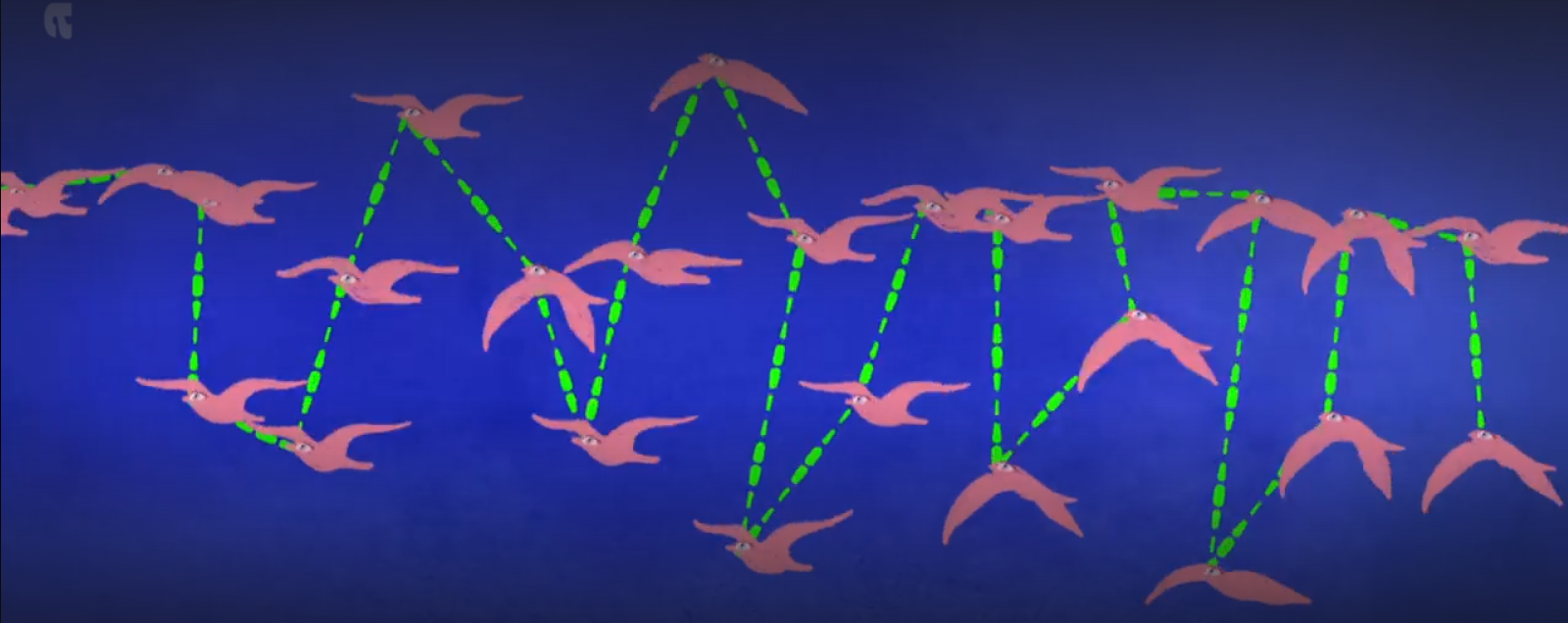
No leader, no norms but a synchronic, empathic, movement is created out of disorder.
It eventually becomes purpose-driven for the collectivity.
♣ Morality can emerge from purposeful behavior seen, heard, observed or lived within a group (intellectual or emotional).
Nowadays, the intellectual comfort zones are artificially created and much more polarized behaviors occur. The rules, the understanding, the acting becomes less nuanced, more simple. Again, one of the basic rules of Swarm Intelligence.
Social media ‘filter bubbles’ and extreme polarization can be seen as a sociological catalyst for future and progressively frequent Swarm Ethics experiences.
“Why we cooperate” and the need for mutuality by Michael Tomasello
In “Why we cooperate” (2009 MIT) by psychologist Michael Tomasello, a book based on the 2008 Tanner Lectures on Human Values at Stanford, it is understood that humans act collectively according to social norms and rules. Which is different for animals. They have no social institutions.
♣ Be it ‘shared intentionality’ (Searle) or the ‘wisdom of the crowd’ or ‘swarm intelligence’ they underly desired or forced cooperation for survival. Tomasello
Michael Tomasello looks at altruism (which is also a key element in primate behavior) and rapidly moves on to the much more benevolent and beneficial mutuality.
- In Swarm Ethics mutuality is paramount. It goes both ways. As in Swarm Intelligence.
- Mutualism is one of the very basic rules for a swarm to solve a complex problem.
- Each other’s next agent is a reference point, an input/output for speed, direction or purpose.
- Mutuality offers a win-win setting and stars with the idea of togetherness. Togetherness being paramount in Swarm Intelligence.
However the togetherness in swarms is very different as we imagine.
Common efforts are delivered but on an individual, autonomous basis. This is crucial. For Swarm Intelligence to be efficient and for Swarm Ethics to be effective.
♣ Individuals are autonomous in a collective way.
It is ethical mass individualization for a collective urgent purpose.
The 2nd catalyst for Swarm Ethics : mutuality and imitation

In Swarm Ethics the Next Other is important. To turn to anthropology instead of philosophy when it comes to Swarm Ethics is of prime importance.
Focus on René Girard and the Nemesis/imitation theory and Frans de Waal on adaptive behavior.
♣ “Darwin saw human morality as continuous with animal social instincts, and my own work is a return to Darwinian thinking. I am supported in this now by many recent studies that indicate that humans (and other animals) are far more altruistic and cooperative than was assumed. The field has radically changed in recent years.” Frans de Waal
In moving towards Swarm Ethics, René Girard’s mimetic theory is fundamental. The idea of mimesis is not new and can be found with Plato, Aristotle as well as in Chinese or Islamic cultures.
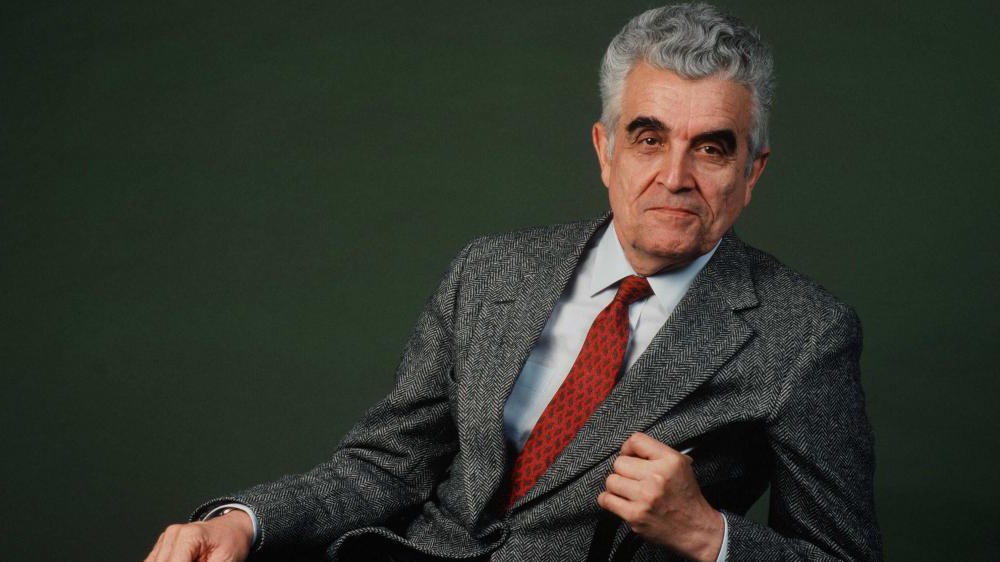
The Imitation Theory is based on having models in life, examples or admirations for that influence our being, choices, actions and behavior in life.
Kind of an “Imitation Game” but not in the sense of Alan Turing’s ‘Can machines think?’. It would reflect the idea of ‘mirror neurons’ that are activated by both biological and non-biological movements. Neuroscientist Giacomo Rizzolatti at the Università degli Studi di Parma discovered those mirror neurons in the 1990s. Rizzolatti
♣ says that the neurons could help explain how and why we “read” other people’s minds and feel empathy for them. If watching an action and performing that action can activate the same parts of the brain in monkeys–down to a single neuron–then it makes sense that watching an action and performing an action could also elicit the same feelings in people.
Other researchers are interested in whether mirror neurons respond not only to other people’s actions or emotions, but also to the intent behind those actions. In our case it would be purpose : survival and a sense of urgency, translated in many meaningful purposes like protecting our planet, fighting against biases, acting against unfairness…
« It seems clear that mirror neurons are one key to understanding how human beings survive and thrive in a complex social world » says neuroscientist Vittorio Gallese, MD, PhD, one of Rizzolatti’s colleagues at the University of Parma.
The concept of Imitation is key for Turing, as it is for Girard and Tomasello. For Tomasello there are two ways of cooperation for humans : 1) teaching (altruistically sharing, helping) and 2) imitation. The second one is, like Girard’s imitation, a basic rule in Swarm Ethics.
It consequently means that Swarm Ethics could also have a darker side. Girard distinguishes ‘imitation’ from ‘mimesis’. Imitation as the positive aspect of mirroring someone else’s behavior, whereas mimesis pictures the negative aspect of rivalry. Consequently value-based imitation differs from shallow mimicry.
The 3rd catalyst for Swarm Ethics : care and empathy
Are we naturally inclined to care? Rousseau or Hobbes. Are we born good and get corrupted by society (Rousseau) or are we forged altruistically by empirical social experiences (Hobbes)? Tomasello writes :
♣ “Research in other laboratories is consistent with this conclusion: even infants below one year of age distinguish helpful from unhelpful agents.”
More precisely and evidently, we do have an innate “sense of fairness” and urge to help others. This could help to become rapidly permeable within a group and add to shaping collective ethics.
♣ “Ethics of Care” as introduced by Carol Gilligan is a normative ethics based on specific virtues : benevolence and care.
In this approach the ethical center of gravity moves away from the Self to the Other. The importance of togetherness is emphasized.
It is context-driven and acts as alternative to ethics of justice. Moral choices and ethical actions or behaviors are mainly based on caring and not on justice as with Kohlberg.
The ethical drive comes from the Self, from our empathy for the Other thus causes or purpose ; our caring overrides the logical, cognitive approach to ethics.
It addresses real and urgent collective needs and relies on mutuality (and mirroring). It consequently goes beyond cognition and linguistics or any other system of values and signs and is related to our primary sense of survival.
♣ “Psychologists stress the intuitive way we arrive at moral judgments while activating emotional brain areas, and economists and anthropologists have shown humanity to be far more”
That the crossroads of imitation, empathy and technology is a serious field of investigation, especially in health care through carebots and remote medical artificial agents as outlined in the article “An Empathy Imitation Game: Empathy Turing Test for Care‑ and Chat‑bots” by Jeremy Howick, Jessica Morley and Luciano Floridi.
They start by posing a Turing-like question : “Can artificial carers be empathic?” and measure it by the Consultation and Relational Empathy Measure (CARE). CARE is the most widely used and best-validated scale to measure practitioner empathy with patients.
The 5-page article focuses mostly on how patients perceive empathy reasonably assuming that “the best artificial carers may outperform the worst human practitioners, especially as technology progresses.” To continue “From a person-centered perspective, being treated kindly may take precedence over the source of kindness (human or artificial) or their motivations (intentional or not)”. “From this perspective, the empathic inner state of the empathizer is more important than the behaviours which lead someone to feel empathized with (Howick et al. 2018a, b)”.
Very confusing in an ethical way – to call digitally and data-generated interaction by a carebot “empathy”, even if perceived: It always remains an interaction based on algorithms trained on (questionably) collected data, coded with biased semantics and linguistics. Plus mimicking “empathy” to fragile and vulnerable patients, leaves the author reflexive (because that’s what happens in the real setting with patients outside the Lab).
Nonetheless a perfect transition to the burning question when is come to Swarm Ethics: What does light our inner “ethical fire”?
What does light our inner "ethical fire" ?
Hypothesis 1 - The Anger Inclination Thesis (AIT) to light the "ethical fire"?

Besides norms of cooperation and norms of conformity, one relevant theory in favor of Swarm Ethics is the Anger Inclination Thesis (AIT) by Shyam Ranganathan.
In Ethics and the History of Indian Philosophy, (Motilal Banarasidass, 2007), Ranganathan explains AIT as follows
- a moral statement is an apparently meaningful claim with evaluative import, about which
- there is, attached to it, an inclination to express anger, likely in the absence of mitigating reasons, should the evaluative import of the statement be violated.
On this view, moral statements, and the domain of the moral more generally, is marked out by its “potential explosiveness”.
Further, “the prime function of a moral term,” writes Ranganathan, “is to intentionally refer to the anger inclination attached to an evaluation”.
♣ Swarm Ethics is a reactionary ethics that occurs when there is a sense of urgency, anger, unfairness, fear for survival… and grows rapidly towards a common purpose (rectify the unfairness, correct a harmful measure, save an urgent situation…)
Hypothesis 2 - Beyond virtue ethics : The theory of the "obvious" to light the "ethical fire"?
Virtue Ethics based on a common set of cardinal virtues like prudence, justice, fortitude/bravery and temperance is highly subjective and culturally tainted. It acts as top-down model and inflexible rules and norms that stand front to adaptive behavior in Swarm Ethics. Swarm Ethics is more fluid and ad hoc. But Virtue Ethics is a useful trigger to the concept of the Obvious. What is ethically obvious?
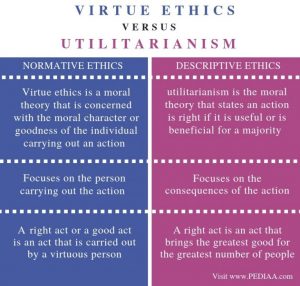
How to deal with the self-referential obvious? The revelation of it. It is right, it is wrong.
Self-explanatory is hardest to explain because it needs no explanation. That’s when Heinz von Foerster does quote his friend Wittgenstein : “Ethics cannot be articulated. Ethics is acted”.
For both it was obvious. But was it obvious to everybody else? Certainly not…
♣ “Es ist Klar, dass sich Ethik nicht aussprechen laesst.” Ludwig Wittgenstein (Tractatus Logico-Philosophicus)
Obviously outraged, Obviously shocked
AIT most likely was at work with the all white-male picture that caused waves of outrage, comments of unfairness, disbelief, anger and fury.
On March 5, this post reached over a whopping 1,7 million views according to Sharon Peake’s LinkedIn post.
With Swarm Ethics, digital communication and especially social media play a key role for speed and dissemination. Social media help to rapidly scale the urgency felt by the swarm. Filter bubbles intensify polarization. The swarm soon synchronizes over ethical issues and the purpose of the (re)action.
In a very similar way, fake news are swarm phenomena within filter bubbles that explode. When it plays out positively, we call it Swarm Ethics. Like the Patagonia case. A positive right of Swarm Ethics.
On the other hand, the Munich Security Conference 2022 luncheon picture is a positive wrong of Swarm Ethics.
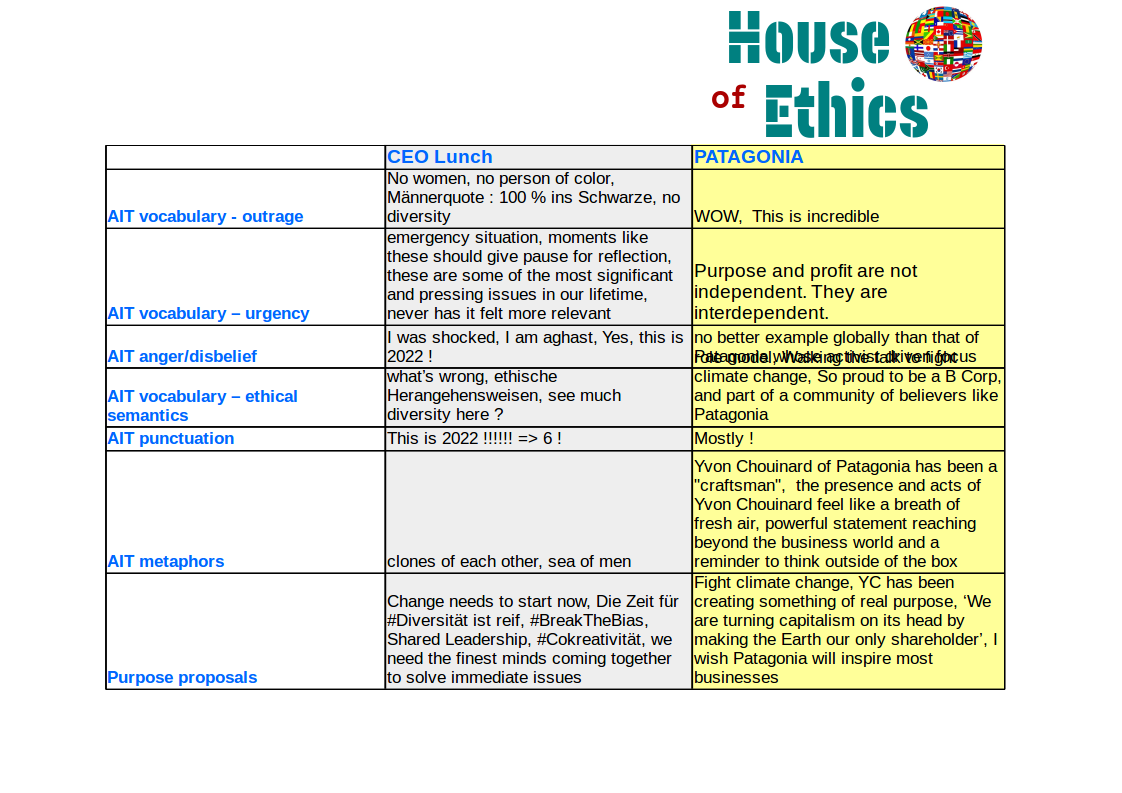
For the Patagonia business shock, many headlines expressed the “explosiveness” of Yvon Chouinard’s Big Bang.
“Patagonia and its founder shocked me this week by staying true to their values to do good in the world, in their case specifically good for the environment. This was shocking because it seems so seldom that companies do good not just in sporadic moments but over the long haul.” Source : Inc.
♣ “The attempt to understand moral terms and the domain of the moral in general in terms of characteristic reactive attitudes in the form of an inclination to anger.” Ranganathan
Both the Power of Purpose and the Power of the Obvious fueled the explosiveness.
WHO can benefit from Swarm Ethics ?
OBJECTIVE OF SWARM ETHICS ?
Build on the “Power of Purpose” and shape the “Ethical individual We-ness” within a group, company through skills and techniques.
FOR WHOM ?
Corporations, business units, remote teams, technical and non-technical teams, entrepreneurs, managers and C-level executives
HOW TO COACH ON SWARM ETHICS ?
The House of Ethics has developped a comprehensive
“Swarm Ethics Coaching Program©”.
Interested – click here
⇒The coaching program is based on skills-oriented behavioral, ethical and business/digital techniques.
How to develop, nuture and fuel
Swarm Ethics?
Some insights collected.
♣ Swarm Ethics as a perception-action behavior addressing a collective purpose, intuitively by imitation more than rationally by cognition, based on caring through empathy more than on judging by reasoning.
Is Swarm Ethics related to the obvious?
Is there such as thing as the “ethical obvious” revealed like a phenomenon? If so, when does it occur?
What does light the “ethical fire” within us?
The following insights were kindly sent a while ago, when the first eye-opening picture of the Munich Security Conference 2022 luncheon hit social media in February.
How to nurture our “ethical gut”?
What kind of skills, sensitivity or senses do we have to use in order to recognize, be alert and grasp the “obvious”?
How to fuel or train or nurture our “ethical sensors” in order to optimize our “ethical compass” ?
Tiphaine BOURVIC
Supply Chain Consultant

“In a world where you can be anything, be kind.”
The first time I read this quote it struck me by its accuracy, and its effect does not fade over time. It even makes more sense after reading the definition of the basics of ethics by Roger-Pol Droit: “Ethics first is about caring for others. Because the existence of others, our numerous relationships between others and ourselves are the most universal starting point of all forms of ethics”. In a globalized world in which everything happens progressively faster due to technological advances, where real and virtual bounderies have never been so open, and in which the new public square, the “web”, is globalized and where everyone expresses their opinions and judgments in real time; what if caring for others were the real key to keep in mind?”
Chhavi CHAUHAN
Director of the Pathology Digital Healthcare Advocate
 “In this day and age, when the majority of the informed and/or educated folks have embraced the concept of equality and started exploring the idea of equity, it is shocking and perplexing to encounter an image like this. How can one expect an ethical holistic outcome from any discussion that happened in this (presumably) cis-gendered all white “experienced” white collar male population who seems to be completely oblivious of the concept of equity or the existence of any other kind of humanity?
“In this day and age, when the majority of the informed and/or educated folks have embraced the concept of equality and started exploring the idea of equity, it is shocking and perplexing to encounter an image like this. How can one expect an ethical holistic outcome from any discussion that happened in this (presumably) cis-gendered all white “experienced” white collar male population who seems to be completely oblivious of the concept of equity or the existence of any other kind of humanity?
Should we expect a superficial tokenism as the collective offering from this group next? “
Kévin DURET
Logistics Executive
 Ethics has two essential ingredients that work in symbiosis. On the one hand, simplicity in everything: to understand, communicate and cooperate together. On the other hand realism: to stay connected to others in their diversity to put these ideas into practice in the realities of each one. These are two lines that we must align to define the right path to take in any circumstance.
Ethics has two essential ingredients that work in symbiosis. On the one hand, simplicity in everything: to understand, communicate and cooperate together. On the other hand realism: to stay connected to others in their diversity to put these ideas into practice in the realities of each one. These are two lines that we must align to define the right path to take in any circumstance.
Ahmed HEMEDAN
Doctoral Researcher in BioInformatics
 Sometimes we have an ethical sniffer that gives us an immediate obvious gut feeling about a situation and which might be better or worse. That feeling can be really stubborn in its hold on our judgement. There’s no argument that will silence those feelings that something’s not quite right. They are primers that get us ready to act, originating from our unconscious, personal experience. Useful? Yes but only if they’re developed properly. Some rely heavily on feelings without subjecting them to close scrutiny. Others ignore them altogether. Both miss essential components of ethical judgement, which is required to train our mind so that it’s refined over time. When we’re evaluating what’s right or wrong, we need to consider ethical judgement. It begins with our feelings but uses reason, critical thinking and contextual awareness to put them under the microscope. It is important to know how different thoughts affect your feelings, considering your knowledge. What are the facts? How do relate to values? Are you making assumptions or jumping to conclusions? Do you need more information? Do the people and ideas are relevant? What values and ideals? What concepts matter? To whom do they matter? Are there any non-negotiables by checking into our feelings, refining them over time to inform our judgments? We can come up with quick decisions that make sense but also feel right.
Sometimes we have an ethical sniffer that gives us an immediate obvious gut feeling about a situation and which might be better or worse. That feeling can be really stubborn in its hold on our judgement. There’s no argument that will silence those feelings that something’s not quite right. They are primers that get us ready to act, originating from our unconscious, personal experience. Useful? Yes but only if they’re developed properly. Some rely heavily on feelings without subjecting them to close scrutiny. Others ignore them altogether. Both miss essential components of ethical judgement, which is required to train our mind so that it’s refined over time. When we’re evaluating what’s right or wrong, we need to consider ethical judgement. It begins with our feelings but uses reason, critical thinking and contextual awareness to put them under the microscope. It is important to know how different thoughts affect your feelings, considering your knowledge. What are the facts? How do relate to values? Are you making assumptions or jumping to conclusions? Do you need more information? Do the people and ideas are relevant? What values and ideals? What concepts matter? To whom do they matter? Are there any non-negotiables by checking into our feelings, refining them over time to inform our judgments? We can come up with quick decisions that make sense but also feel right.
Daniele PROVERBIO
PhD candidate in BioInformatics and Complex Systems
 To recognize “obvious” ground and shared truths is the long quest of ethical debates. Over the centuries, various proposals (inner human qualities, God, etc.) got questioned and confuted. The problem is even more prominent in the current post-modernistic era, where everything looks relativistic and fragile.
To recognize “obvious” ground and shared truths is the long quest of ethical debates. Over the centuries, various proposals (inner human qualities, God, etc.) got questioned and confuted. The problem is even more prominent in the current post-modernistic era, where everything looks relativistic and fragile.
In many cases, then, the quest for universal ethical principles is substituted by the creation of social problems (“problèmes sociaux”), more contingent and circumscribed. If claim-makers create a sufficiently strong narration, resonating with previous instances, then those problems become “obvious”.
In the proposed example, I observe what was crafted as a social problem – the lack of equality – that, over the years, became so engraved in our mentality that it become obvious. It likely connects with ethical values like equality of human beings. However, distinguishing between social problems and ethical principles, and telling which come first, is tricky and demanded to other think tanks 😉 .
Juliette POUPARD
Strategy Director #GreenEconomy at Groupe PSB

Obvious and ethical… Two key words and two main ideas :
1) There is nothing more precious than life and all life is precious. Women, men, old, young, representatives of all countries, poor or rich, animal or human: all life must be taken into account in a constant search for mixity and diversity.
2) There is no ethics when bonds in relationships are guided by the aim to take power over the other. Each of us must take responsibility for the proposed communication framework.
- Founder HOUSE OF ETHICS
- Author's Posts
Katja Rausch is specialized in the ethics of new technologies, and is working on ethical decisions applied to artificial intelligence, data ethics, machine-human interfaces and Business ethics.
For over 12 years, Katja Rausch has been teaching Information Systems at the Master 2 in Logistics, Marketing & Distribution at the Sorbonne and for 4 years Data Ethics at the Master of Data Analytics at the Paris School of Business.
Katja is a linguist and specialist of 19th century literature (Sorbonne University). She also holds a diploma in marketing, audio-visual and publishing from the Sorbonne and a MBA in leadership from the A.B. Freeman School of Business in New Orleans. In New York, she had been working for 4 years with Booz Allen & Hamilton, management consulting. Back in Europe, she became strategic director for an IT company in Paris where she advised, among others, Cartier, Nestlé France, Lafuma and Intermarché.
Author of 6 books, with the latest being “Serendipity or Algorithm” (2019, Karà éditions). Above all, she appreciates polite, intelligent and fun people.
-
The proposed concept of swarm ethics evolves around three pilars : behavior, collectivity and purpose
Away from cognitive jugdmental-based ethics to a new form of collective ethics driven by purpose.
